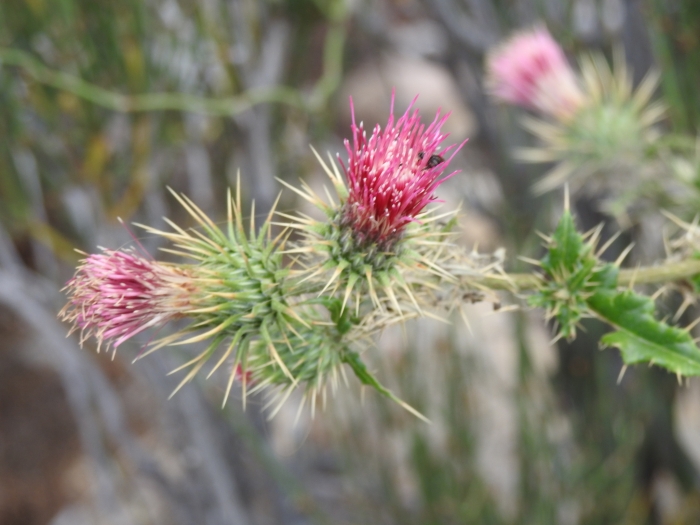Arizona Thistle
(Cirsium arizonicum)
Arizona Thistle (Cirsium arizonicum)
/
/

Elizabeth Green
CC BY 4.0
Image By:
Elizabeth Green
Recorded By:
Copyright:
CC BY 4.0
Copyright Notice:
Photo by: Elizabeth Green | License Type: CC BY 4.0 | License URL: http://creativecommons.org/licenses/by/4.0/ | Rights Holder: Elizabeth Green | Publisher: iNaturalist | Date Created: 2019-07-11T16:29:36-07:00 |






















Estimated Native Range
Summary
Cirsium arizonicum, commonly known as Arizona thistle, is a perennial herb native to various habitats including mountain meadows, forest clearings, and riparian zones in the southwestern United States and northwestern Mexico, specifically in Arizona, southeastern California, New Mexico, Nevada, Colorado, Utah, Sonora, and northwestern Chihuahua. It typically grows 1 to 4.9 feet tall and features spiny leaves and vibrant red, pink, or purple flowers that bloom from mid-spring to mid-fall, adding a splash of color to the landscape. The flowers are particularly showy and attract a variety of pollinators, including bees and butterflies.
Arizona thistle is valued for its ornamental flowers and its ability to adapt to a range of mountainous environments. It is used in native plant gardens and restoration projects, especially in areas with similar elevation and climate conditions. This plant prefers full sun to partial shade and requires well-drained soils; it is drought-tolerant once established. While it is not commonly used in traditional horticultural settings, its striking appearance and ecological benefits make it a suitable choice for naturalistic plantings. Gardeners should be aware that, like other thistles, it can be somewhat invasive and may require management to prevent unwanted spread.CC BY-SA 4.0
Arizona thistle is valued for its ornamental flowers and its ability to adapt to a range of mountainous environments. It is used in native plant gardens and restoration projects, especially in areas with similar elevation and climate conditions. This plant prefers full sun to partial shade and requires well-drained soils; it is drought-tolerant once established. While it is not commonly used in traditional horticultural settings, its striking appearance and ecological benefits make it a suitable choice for naturalistic plantings. Gardeners should be aware that, like other thistles, it can be somewhat invasive and may require management to prevent unwanted spread.CC BY-SA 4.0
Plant Description
- Plant Type: Herb
- Height: 1-5 feet
- Width: 1-1.5 feet
- Growth Rate: Moderate
- Flower Color: Pink, Purple, Red
- Flowering Season: Spring, Summer, Fall
- Leaf Retention: Deciduous
Growth Requirements
- Sun: Full Sun, Part Shade
- Water: Medium
- Drainage: Medium
Common Uses
Butterfly Garden, Low Maintenance
Natural Habitat
Mountain meadows, forest clearings, and riparian zones
Other Names
Common Names: Southwestern Thistle
Scientific Names: , Cirsium arizonicum, Carduus arizonicus, Carduus nidulus, Cirsium arizonicum var. nidulum, Cirsium nidulum, Cirsium nidulum, Cnicus arizonicus, Cnicus nidulus,
GBIF Accepted Name: